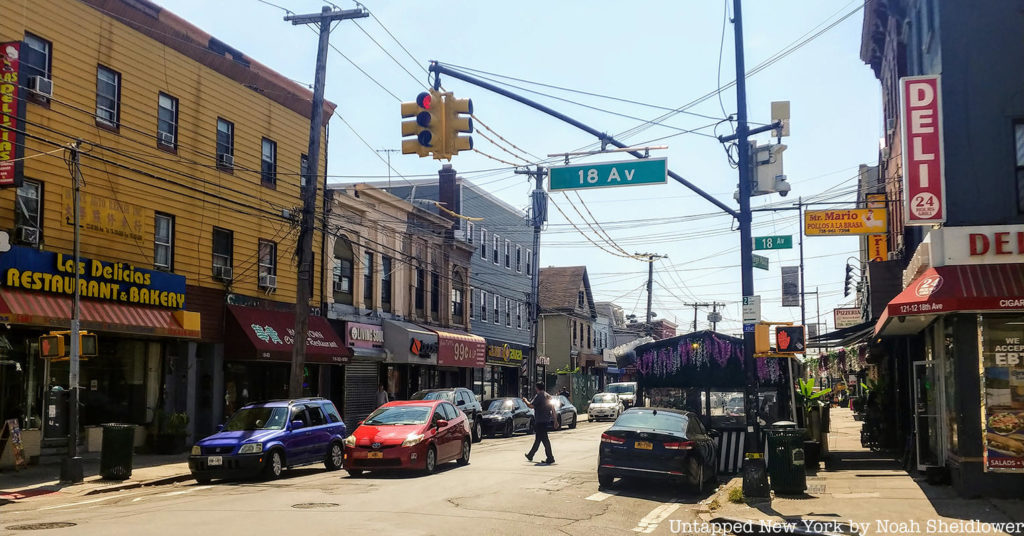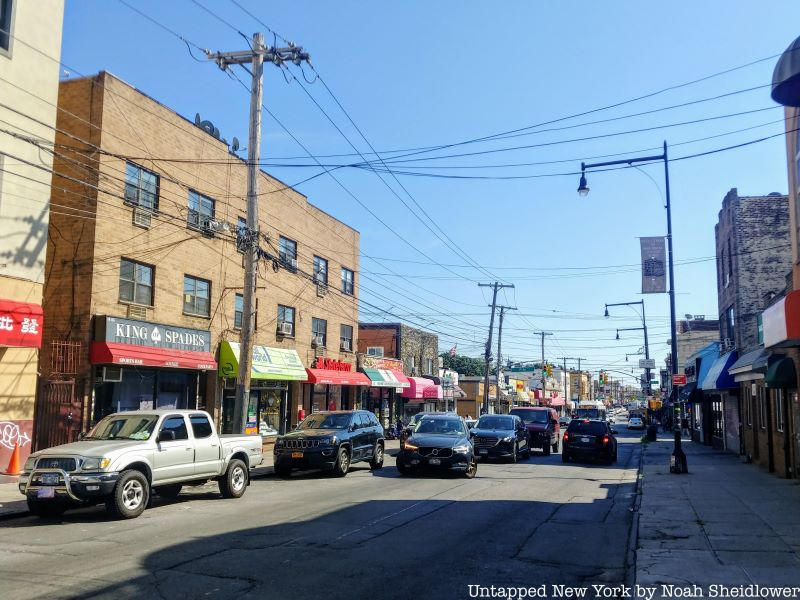
College Point is a diverse neighborhood in northern Queens, located north of Flushing and west of Whitestone. The neighborhood is often considered one of the most isolated in the borough because of the Whitestone Expressway and the lack of subway service nearby. The area was mostly rural until the mid-1850s when rubber factories and other industrial operations moved into the area. Many historic properties from the late 1800s still stand along or near College Point Boulevard, including the old Haefele’s Hotel from 1880. The neighborhood was even a resort town for a few decades, though much of College Point‘s waterfront property is now rather industrial. Today, the area is quaint and filled with parks and green spaces including Powell’s Cove Park, which offers views of the Whitestone Bridge. Here is our guide to the top 14 secrets of College Point.
1. College Point is named for the short-lived St. Paul’s College

With the exception of the New York City Police Academy, there are no colleges in College Point — and there hasn’t been a college there in decades. This begs the question, why is the neighborhood called College Point? It turns out a college once existed there, but it opened in 1835 and shuttered by 1850. The center for education, St. Paul’s College and Grammar School, was a seminary founded by Reverend William August Muhlenberg and is often considered the father of American church schools. The school aimed to train missionaries and teachers. Muhlenberg also founded St. Luke’s Hospital, now Mount Sinai Morningside. While serving as rector for Flushing’s St. George’s Church, he led construction on the seminary, incorporating pink and white marble.
The school struggled from the start. The Panic of 1837, which sparked high unemployment and lower wages, made it difficult for Muhlenberg to endow the college or even find enough students, meaning that he could not charter the school. No student could receive a bachelor’s degree, so enrollment stalled in hopes that the economy would improve. Unfortunately, Muhlenberg’s project was unsuccessful, despite his success with schools across Long Island, and he moved from New York City in 1847; the school shuttered just 15 years after it opened in 1850. Few remnants of the school remain, but the neighborhood has retained the name for nearly two centuries.





